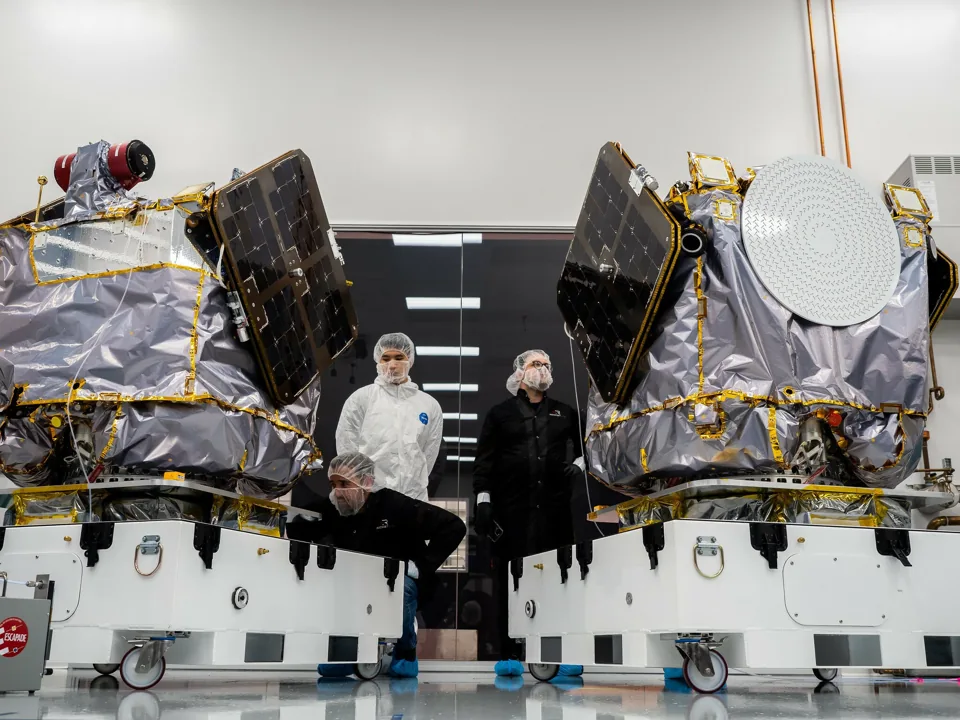| Summary |
|
Rocket Lab’s long-awaited first mission to Mars has been pushed back again, with NASA now aiming for a launch no earlier than September 29, 2025, for the two small spacecraft that were originally set to blast off in October 2024.
The ESCAPADE mission, meant to study how Mars lost its atmosphere, got delayed because of technical issues with Blue Origin’s New Glenn rocket. That vehicle made its successful debut flight in January 2025, but NASA chose to shift ESCAPADE to New Glenn’s second outing to allow more time for preparations and cut down on risks.
The mission uses two identical spacecraft, named Blue and Gold, that will orbit Mars and watch how solar particles from the sun interact with the planet’s weak magnetic field. Researchers think this interaction slowly stripped away the thick atmosphere Mars had long ago, turning it into the cold, dry place we see now.
NASA explained the delay by pointing to concerns that rushing preparations might lead to expensive steps like removing and replacing fuel in the spacecraft. “Interplanetary launches require precision and reliability,” the agency noted. “Taking extra time now reduces risk later.”
The spacecraft came from Rocket Lab, the company started in New Zealand that’s gained attention for its compact Electron rockets. In 2020, NASA gave Rocket Lab a $57 million deal to build the probes, and they finished the job in about three and a half years, quicker and less expensive than most missions to other planets.
Rocket Lab’s CEO, Peter Beck, described ESCAPADE as a big move for them. “We set out to prove that smaller teams can build reliable interplanetary spacecraft at a fraction of the cost,” he said earlier this year.
Rocket Lab has put more than 190 satellites into space since 2018 and posted quarterly revenues near $100 million not long ago. They’re also working on a bigger rocket called Neutron, set to fly for the first time later in 2025, when it could go up against SpaceX’s Falcon 9.
Once Blue and Gold reach Mars’s orbit, they’ll track how the solar wind—a constant flow of charged particles from the sun—impacts the atmosphere there. Mars lacks a strong magnetic field like Earth’s, so it can’t protect its air from being worn away by solar radiation.
The probes should grab the first visible-light pictures of auroras on Mars, those subtle glows in the thin air triggered by solar particles. The data might help figure out if intense solar storms billions of years back removed the elements that could have supported life.
NASA funds this through its Small Innovative Missions for Planetary Exploration program, which backs focused science on a tighter budget. ESCAPADE comes in at $80 million total.
Launches to Mars need exact timing, with the best windows every 26 months or so when the planets line up. This latest shift means NASA has to plot different paths, which might stretch the trip or use more fuel.
With a September 2025 launch, the spacecraft would need roughly 11 months to get to Mars, arriving around August 2026. They’d spend a few months settling into their orbits before starting data collection later that year. The whole operation is planned for 11 months, divided into two main phases.
Even with the holdup, NASA says the mission’s aims haven’t changed. “ESCAPADE is designed to help us understand how Mars became the planet it is today,” the agency said.
If it works, the results could broaden what we know about planets losing their air and aid planning for human trips to Mars down the line. For Rocket Lab, this marks their entry into missions beyond Earth and a shot at taking on bigger players in space exploration.

